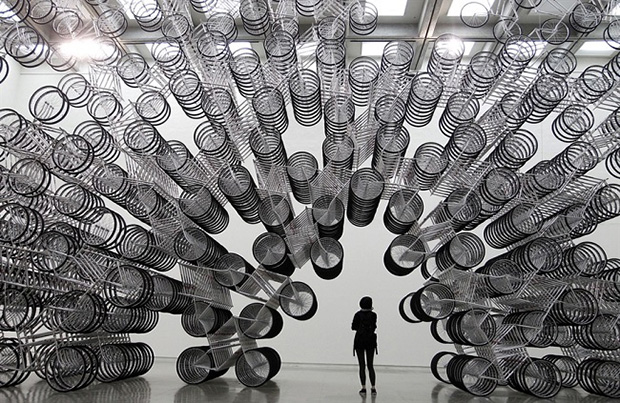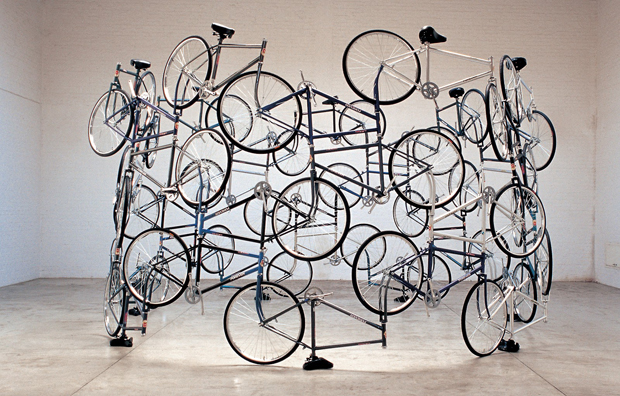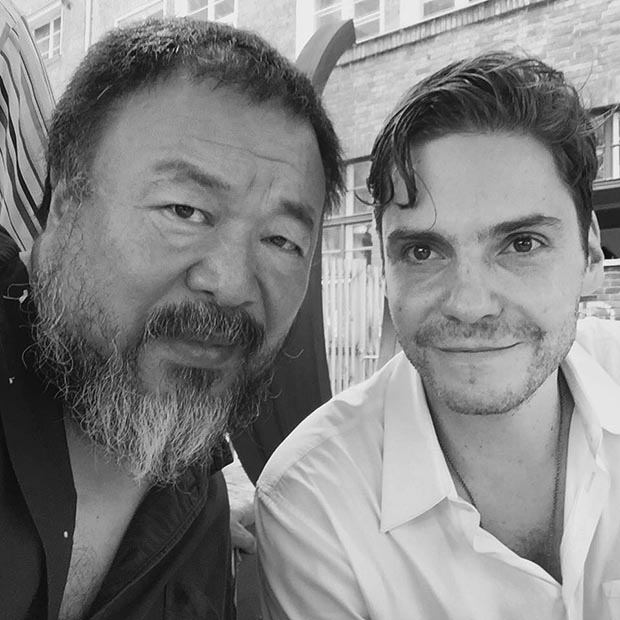
Ai Weiwei’s bicycles come to London
The artist's famous Forever sculpture will be installed in the British banking district at the beginning of next month
Following the 2012 Olympics, Londoners took up cycling with gusto. Yet few of those riding on the British capital’s roads would favour the kind of bike Ai Weiwei has used in his sculpture, Forever.
The work, which will be on show 3 – 14 September in London, beside the Foster + Partners designed building, 30 St Mary Axe, known colloquially as the Gherkin, is an assembly of cheap, steel bicycles, once popular across China. The Shanghai bicycle company Forever was founded in 1940, and produced mass-market machines for the quotidian Chinese worker. Over the past few decades, aspiring Chinese citizens have begun to favour motoring over cycling, and, while Forever bicycles are still in use, their clunky frames speak of an earlier age Chinese social politics.

The artist Ai Weiwei produced his first Forever sculpture in 2003, partly in recognition of the bicycles’ bygone role within Chinese society, and partly in homage to his Marcel Duchamp’s 1913 readymade, Bicycle Wheel – a simple set of bike forks and front wheel screwed onto a stool. Yet Weiwei’s work, which has been installed in many different cityes around the world, can be reproduced with any different number of bicycles, and refers to something unchanging and universal in human nature: the collective power of thrift and harmony; the beauty to be found in synchronicity; and, perhaps, the lack of individual autonomy once one is within the mob – after all, these bicycles lack chains, pedals and handlebars.
The sculpture, which is being installed as part of London’s Sculpture in the City programme, will also find a specific resonance, given its position in heart of Britain’s banking district. As Bernard Fibicher puts it in our monograph, Forever is the kind of work where “individual components come together to achieve a cogent physical structure and enjoy a symbolic relationship with space.” We will have to wait a week to see just how Ai’s workers' bikes fit in beside the British capital’s financial-services employees.

For more on the installation go here; for a greater understanding of this important artist’s life and work get our authoritative monograph; and for more on site-specific art, get a copy of Art and Place.